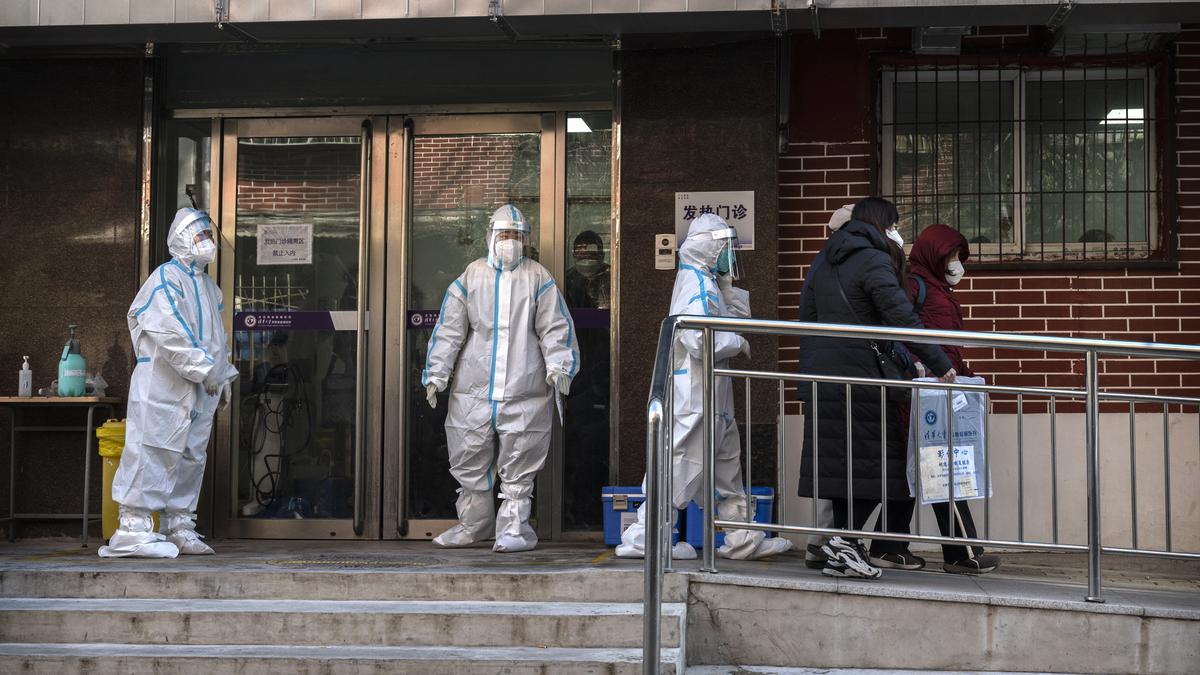News Highlight
India’s first case of the XBB.1.5 subvariant of Omicron was confirmed in Gujarat by the national genome sequencing consortium on December 31.
Key Takeaway
- XBB.1.5 has been driving COVID-19 cases in the U.S. Studies of the strain indicate that it is highly transmissible and evades pre-existing immunity.
- Yet it doesn’t seem to cause severe disease. But U.S. scientist Eric Topol wrote that it isn’t just superficially scary; we need to pay attention to it.
- The global prevalence of XBB.1.5 isn’t evident yet, although its parent strain has been detected in at least 35 countries.
- By December 30, XBB.1.5 accounted for 40.5% of all new cases in the U.S., up from 21.7% a week earlier.
Omicron XBB.1.5 Variant Of COVID 19
- Background
- In August 2022, the variation XBB was discovered for the first time in India.
- It swiftly took over both Singapore and there.
- Since then, XBB.1 and XBB.1.5, two further subvariants, have been discovered.
- Scientists and public health authorities have studied the XBB subvariants for many months.
- About
- According to researchers, XBB was created by combining Omicron’s original BA.2 sub-variant.
- Its descendants, XBB.1.5, have higher degrees of transmissibility because they have a tighter bind to the ACE2 receptor.
How transmissible is it?
- XBB.1.5 is as immune-evasive as XBB.1.
- XBB and XBB.1 are the most elusive strains to date and were more immune-evasive than BA.5.2 (whose offspring BF.7 is exploding in China).
- A previous BF.7 breakthrough infection didn’t offer much defence against an XBB.1.5 infection.
- The virus is still highly transmissible, which allows it to spread more widely and increases the likelihood that it may mutate into more powerful versions.
What are the implications for India?
- In India, with hybrid immunity in a unique circumstance of spontaneous infection followed by two shots of vaccinations for adults, no sublineage is anticipated to trigger a new wave.
- The development of new vaccines should continue, but they shouldn’t be linked to more recent subvariants.
- A new subvariant might appear by the time these vaccines are made available.
- The need for more sufficient data to follow up on the initial COVID-19 booster could result in original antigenic sin.
- Repeated booster administration “saturates” the immune system and reduces its response to subsequent doses.
- After the third dose, the administration of additional COVID-19 vaccination shots should be postponed as much as feasible.
- Any choice about public policy should be based on rigorous scientific analysis and relevant evidence.
Is there a risk of a new Covid-19 wave with the XBB variant?
- Most people are not even getting tested right now, even though the XBB strain is likely to cause a fever, cough, and cold in most people.
- In India, XBB is currently the predominant variant after accounting for 8% of all cases in September, rising to 45.2% in October and 65.6% in November.
- There would already be some signs if XBB had the potential to cause a spike in cases, hospital admissions, and fatalities.
- However, even the number of cases has decreased, with an average of just 158 cases being recorded every day from around the nation in the week that concluded on December 19.
Pic Courtesy: The Hindu
Content Source: The Hindu



